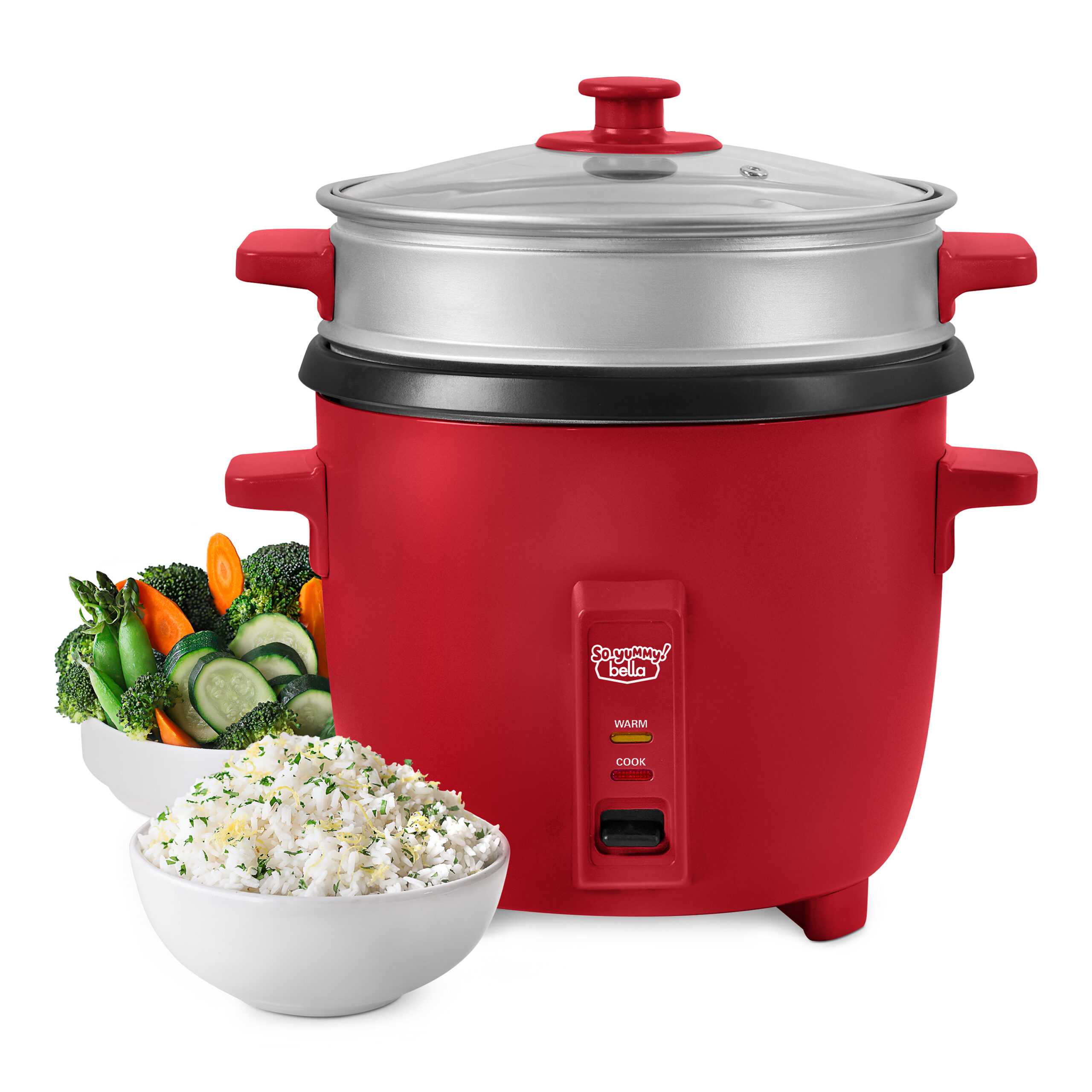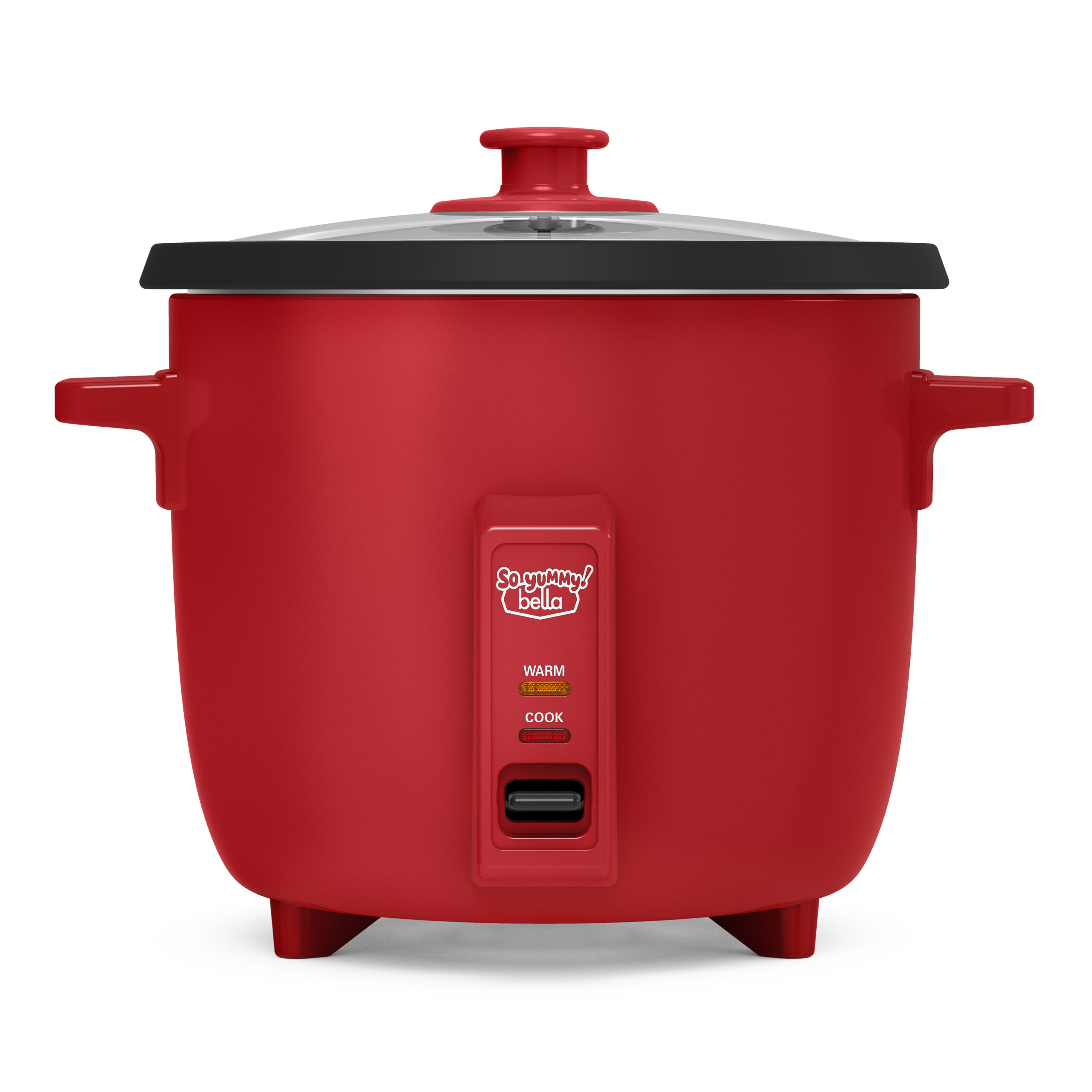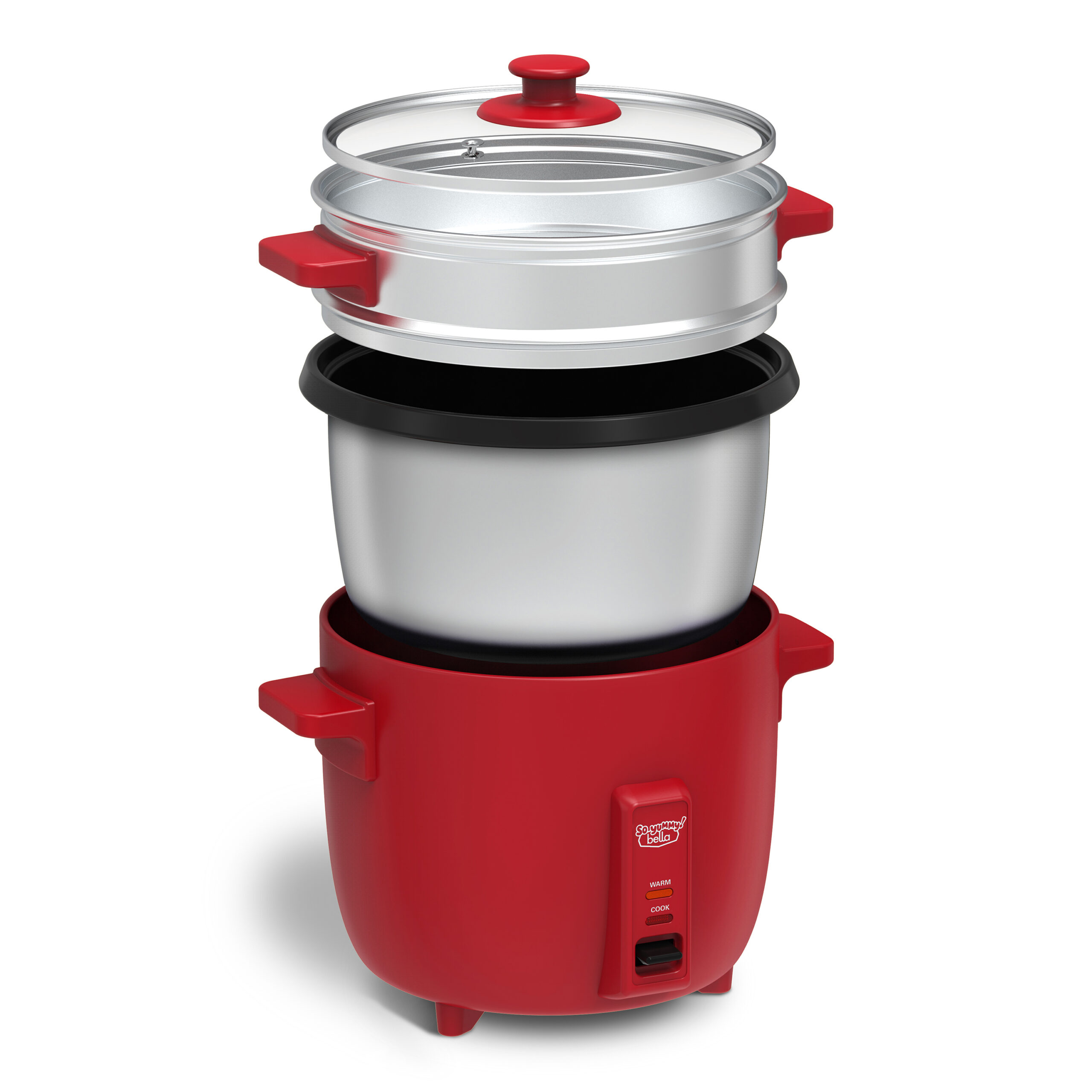Understanding Rice Cookers and Their Functionality
Rice cookers are kitchen appliances designed specifically for cooking rice — and no, that doesn’t just mean white rice. Though they come in various sizes and models, their basic functionality remains the same. The inner pot, usually made of nonstick material, is where the rice and water are placed. The cooker then heats up and brings the water to a boil, which is absorbed by the rice. Once all the water is absorbed, the cooker switches to a “keep warm” mode to maintain the rice’s temperature until it’s ready to be served.
Though the process is pretty similar regardless of the type of rice, not all grains are created equally. Jasmine rice is different from basmati, is different from brown rice, and so on and so forth. So, what exactly separates each type of rice from the other, and how can you cook them properly?
Basmati Rice and Its Cooking Method in a Rice Cooker
What is Basmati Rice?
Basmati rice is a long-grain rice variety commonly used in Indian, Pakistani, and Middle Eastern cuisines. Known for its distinct aroma, basmati rice also has a low to medium glycemic index, making it a healthier choice for those watching their blood sugar levels. It happens to be gluten-free, making it suitable for individuals with gluten sensitivities or celiac disease. The grains of basmati rice are thinner compared to other rice varieties, and they remain separate and fluffy after cooking. This makes basmati rice perfect for dishes like biryani and pilaf.
Step-by-Step Guide on Cooking Basmati Rice in a Rice Cooker
Here’s a step-by-step guide on how to cook basmati rice in a rice cooker:
1. Measure the desired amount of basmati rice and rinse it under cold water to remove any excess starch.
2. Add the rinsed rice to the rice cooker’s inner pot.
3. Add the appropriate amount of water to the rice cooker. As a general rule, use a ratio of 1.5 cups of water per cup of basmati rice.
4. Close the rice cooker’s lid and select the appropriate cooking setting for basmati rice. If your rice cooker has a specific setting for basmati rice, use that. Otherwise, the white rice setting will work fine.
5. Press the start button and let the rice cooker do its job. Avoid opening the lid during the cooking process to prevent steam from escaping.
6. Once the rice cooker indicates that the rice is done, let it sit for a few minutes to allow the steam to distribute evenly.
7. Fluff the rice gently with a fork or rice paddle before serving.

Jasmine Rice and Its Cooking Method in a Rice Cooker
What is Jasmine Rice?
Jasmine rice is a fragrant, long-grain rice known for its delicate flavor. Originating from Thailand, this type of rice is commonly used in Southeast Asian cuisine and pairs well with a variety of dishes. Its scent is often likened to flowers or popcorn, adding an enticing element to any meal. When cooked, jasmine rice has a slightly sticky texture, making it perfect for stir-fries, curries, and sushi.
Step-by-Step Guide on Cooking Jasmine Rice in a Rice Cooker
Cooking jasmine rice in a rice cooker is a convenient and foolproof method to achieve perfectly fluffy grains. Here’s your handy step-by-step guide:
1. Measure the desired amount of jasmine rice using the measuring cup provided with your rice cooker.
2. Rinse the rice under cold water until the water runs clear.
3. Add the rinsed rice to the rice cooker’s inner pot.
4. Add the appropriate amount of water to the pot based on the rice-to-water ratio recommended for jasmine rice (typically 1:1.5, like basmati rice).
5. Close the rice cooker’s lid and select the appropriate cooking setting for jasmine rice.
6. Press the start button and let the rice cooker work its magic.
7. Once the rice cooker completes its cooking cycle, let the rice sit for a few minutes to allow for steam absorption.
8. Fluff the cooked jasmine rice gently with a fork before serving.

Brown Rice and Its Cooking Method in a Rice Cooker
Introduction to Brown Rice and Its Nutritional Benefits
Unlike white rice, brown rice retains its bran and germ layers, which are packed with fiber, vitamins, and minerals. This makes it a great choice for those looking to incorporate more nutrients into their diet. Brown rice is rich in antioxidants and essential nutrients like magnesium and selenium, which promote heart health and support the immune system. Like basmati rice, it has a lower glycemic index compared to white rice, making it a suitable option for individuals managing their blood sugar levels. Incorporating brown rice into your diet can help improve digestion, regulate cholesterol levels, and even aid in weight management.
How to Cook Brown Rice in a Rice Cooker
To start, rinse the brown rice under cold water to remove any excess starch. For every cup of brown rice, add two cups of water to the rice cooker. You can also add a pinch of salt or a drizzle of oil for added flavor. Close the lid and select the “Brown Rice” setting on your rice cooker. The cooking time may vary depending on the brand and model, but it typically takes around 45-50 minutes. Once the rice cooker completes the cooking cycle, let the rice sit for 10-15 minutes to allow it to steam and fluff up. Gently fluff with a fork before enjoying the nutty and wholesome goodness of perfectly cooked brown rice!

How to Cook Sushi Rice in a Rice Cooker
What is Sushi Rice?
This short-grain rice variety, also known as Japanese rice, is the foundation of any sushi dish. What sets it apart from other types of rice is its sticky texture, which allows it to hold its shape when rolled into sushi (and makes it perfect for all kinds of innovative recipes made with sushi rice leftovers!). This stickiness is achieved through a specific cooking method that maximizes the rice’s natural starch content.
Sushi rice is typically rinsed before cooking to remove any excess starch and impurities. Once cleaned, it is then cooked in a rice cooker using a specific water-to-rice ratio. The rice cooker ensures that the rice is evenly cooked and achieves the desired sticky consistency.
Step-by-Step Guide on Cooking Sushi Rice in a Rice Cooker
Like every other type of rice, you’ll rinse this under cold water before adding it to the rice cooker. sushi rice uses a smaller ratio of rice to water, usually 1:1 or 1:1.25. If there’s no “sushi rice” option available on your rice cooker, the regular “white rice” setting will suffice. Avoid opening the lid during the cooking process to maintain the steam and heat inside. Once the rice cooker indicates that the rice is done, let it sit for a few minutes to allow for additional steaming. Fluff the cooked sushi rice gently with a rice paddle or fork.
Wild Rice and Its Cooking Method in a Rice Cooker
Introduction to Wild Rice and Its Distinct Flavor
Unlike regular white or brown rice, wild rice has an earthy taste, making it a popular choice among rice enthusiasts. This grain is actually not a type of rice, but rather a seed harvested from aquatic grass. It is rich in fiber, protein, and essential minerals, making it a healthy addition to your diet. When cooked in a rice cooker, wild rice retains its firm texture and distinct flavor. It pairs well with a variety of ingredients, from vegetables to meats, and can be used in salads, soups, or as a side dish.
Step-by-Step Guide on Cooking Wild Rice in a Rice Cooker
Cooking wild rice in a rice cooker is pretty simple and convenient. Start by measuring the desired amount of wild rice and rinse it thoroughly under cold water before adding to the rice cooker pot. The ratio of rice to water is typically 1:2. Most rice cookers have a specific setting for wild rice. If not, choose the multi-grain option. Once the rice cooker indicates that the cooking is complete, let the wild rice sit for a few minutes before fluffing it with a fork. Serve the cooked wild rice as a side dish or incorporate it into your favorite recipes for a delicious and nutritious meal.

